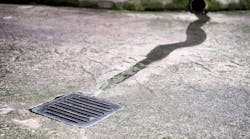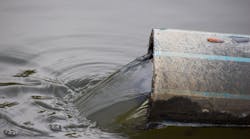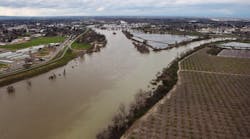WASHINGTON, DC, July 11, 2011 -- A new report from the U.S. EPA answers commonly asked questions about combined sewer overflows and the environmental and public health risks they pose.
"Clean water is vital to people's health and our economy and is a priority for the EPA," said EPA Regional Administrator Judith Enck. "We've seen improvements in water quality since the passage of the Clean Water Act forty years ago, but there is much more to be done to protect our rivers, harbors, lakes and streams."
Combined sewer systems serve about 40 million people in roughly 772 communities nationwide. They are designed to transport sewage, industrial wastewater and rainwater runoff in the same pipes to wastewater treatment plants and are remnants of the country's early infrastructure. Most communities with combined sewer systems are located in the Northeast and Great Lakes regions, and the Pacific Northwest.
During periods of heavy rainfall or snowmelt, the volume of wastewater traveling through a combined sewer system can exceed the capacity of the sewer system or treatment plant. For this reason, combined sewer systems are designed to overflow occasionally and discharge excess wastewater directly to nearby streams, rivers, lakes or other water bodies. These combined sewer overflows contain not only stormwater but also pollutants such as untreated human and industrial waste, toxic materials and debris.
Stormwater contains pollutants, including oil, grease and toxic substances, that are picked up as rain washes across roads or fields. These pathogens may be discharged directly to local waters when it rains, resulting in a discharge that exceeds water quality standards. They pose risks to human health, threaten aquatic habitats and life, and impair the use and enjoyment of the nation's waterways.
The report, Keeping Raw Sewage and Contaminated Stormwater Out of the Public's Water, also provides important information on the laws that protect our waterways and the actions that can be taken to reduce water pollution.
Under the federal Clean Water Act, combined sewer discharges are prohibited without a permit. In December 2000, Congress amended the Clean Water Act by adding a section that requires each permit issued for a discharge from a municipal combined sewer system to "conform" to a national combined sewer overflow policy. The policy is a comprehensive national strategy to ensure that local governments, permitting agencies, entities that establish water quality standards and the public engage in a comprehensive and coordinated planning effort to achieve combined sewer overflow controls that ultimately meet health and environmental standards.
To read or download a copy of the report, visit http://www.epa.gov/region2/water/.
To see an illustration of how serious a problem this is in Brooklyn, go to: http://green.blogs.nytimes.com/2010/09/29/sewage-overflow-in-new-york-believe-it/.
###


